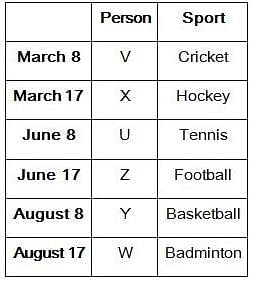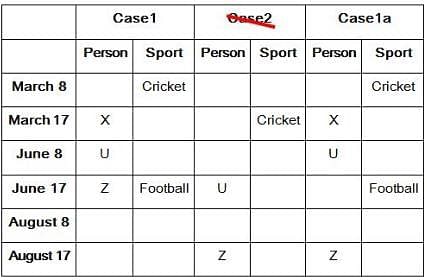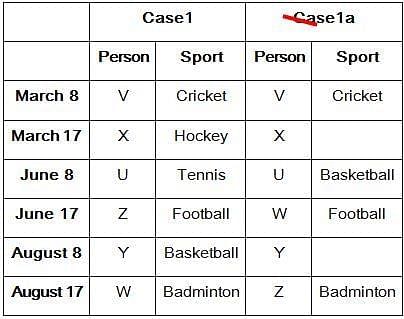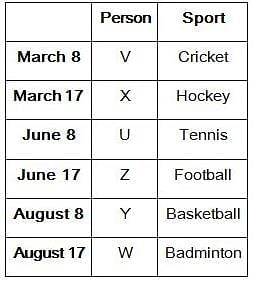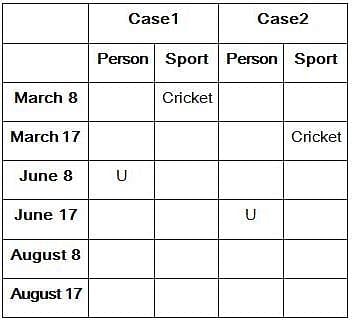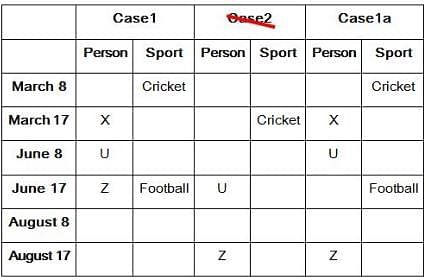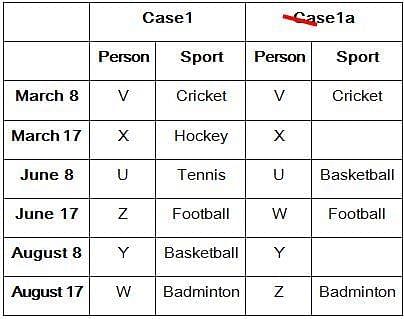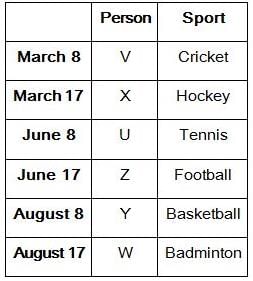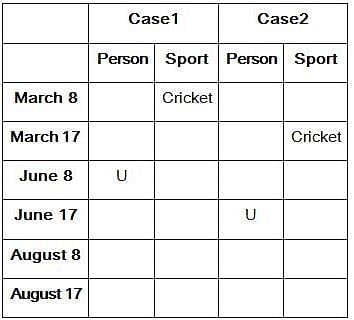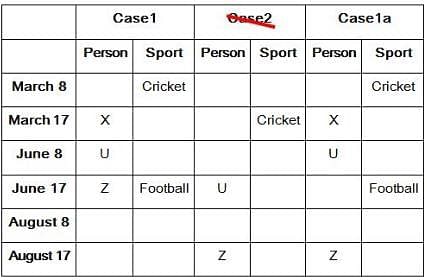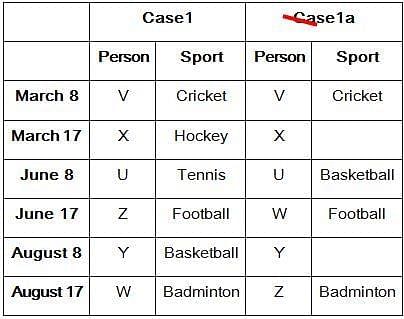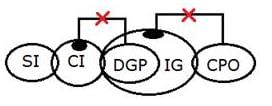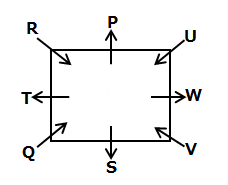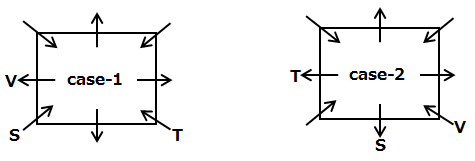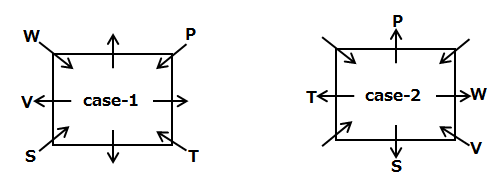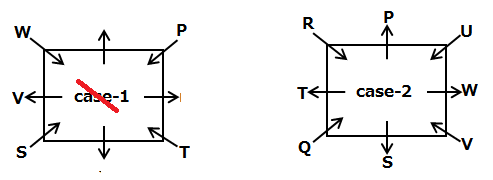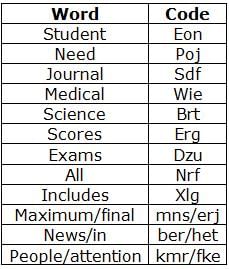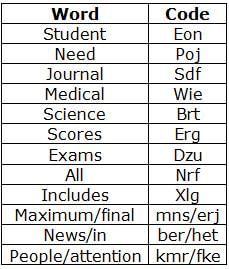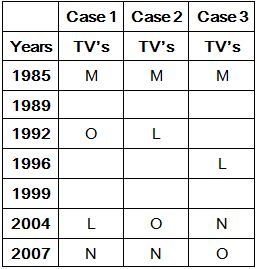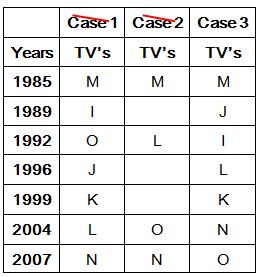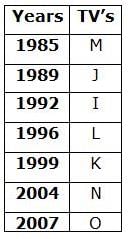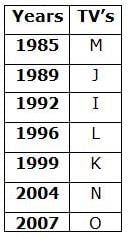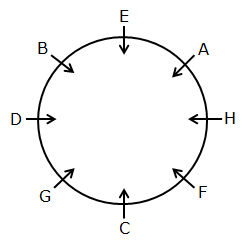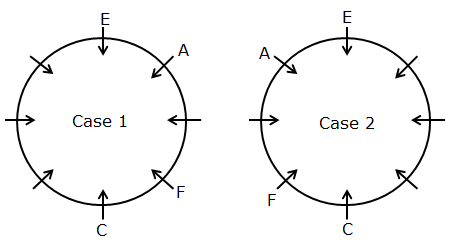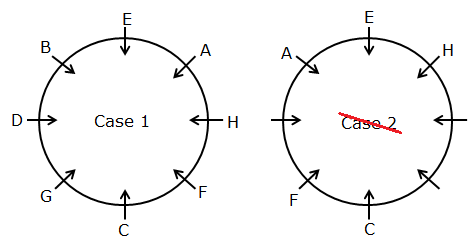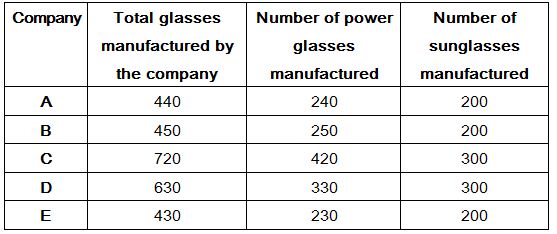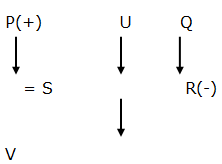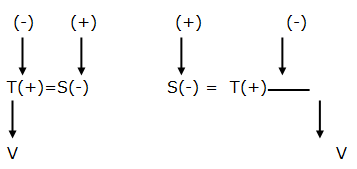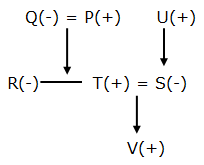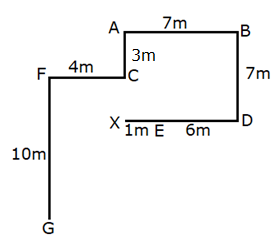IDBI Executive Mock Test - 2 - Bank Exams MCQ
30 Questions MCQ Test - IDBI Executive Mock Test - 2
Study the following information carefully and answer the below questions
Six persons- U, V, W, X, Y, and Z like different sports-Cricket, Hockey, Badminton, Basketball, Football, and Tennis and they participated in this sports event on two different dates either 8 or 17 of three different months- March, June, and August of the same year. All the information is not necessarily in the same order.
U Participated in the month which has an even number of days. U Participated two persons after the one who likes Cricket. Z Participated in the odd number date but after U. X Participated three persons before the one who Participated immediately after the one who likes Football. X did not participate in an even-numbered date. U does not like Football. The one who likes Basketball Participated immediately before W. Y likes neither Cricket nor badminton. The one who likes Badminton Participated in the same month as Y. Neither X nor Y likes Tennis.
Q. Who among the following person participated on August 17?
Six persons- U, V, W, X, Y, and Z like different sports-Cricket, Hockey, Badminton, Basketball, Football, and Tennis and they participated in this sports event on two different dates either 8 or 17 of three different months- March, June, and August of the same year. All the information is not necessarily in the same order.
U Participated in the month which has an even number of days. U Participated two persons after the one who likes Cricket. Z Participated in the odd number date but after U. X Participated three persons before the one who Participated immediately after the one who likes Football. X did not participate in an even-numbered date. U does not like Football. The one who likes Basketball Participated immediately before W. Y likes neither Cricket nor badminton. The one who likes Badminton Participated in the same month as Y. Neither X nor Y likes Tennis.
Study the following information carefully and answer the below questions
Six persons- U, V, W, X, Y, and Z like different sports-Cricket, Hockey, Badminton, Basketball, Football, and Tennis and they participated in this sports event on two different dates either 8 or 17 of three different months- March, June, and August of the same year. All the information is not necessarily in the same order.
U Participated in the month which has an even number of days. U Participated two persons after the one who likes Cricket. Z Participated in the odd number date but after U. X Participated three persons before the one who Participated immediately after the one who likes Football. X did not participate in an even-numbered date. U does not like Football. The one who likes Basketball Participated immediately before W. Y likes neither Cricket nor badminton. The one who likes Badminton Participated in the same month as Y. Neither X nor Y likes Tennis.
Q. How many persons participated before X?
Six persons- U, V, W, X, Y, and Z like different sports-Cricket, Hockey, Badminton, Basketball, Football, and Tennis and they participated in this sports event on two different dates either 8 or 17 of three different months- March, June, and August of the same year. All the information is not necessarily in the same order.
U Participated in the month which has an even number of days. U Participated two persons after the one who likes Cricket. Z Participated in the odd number date but after U. X Participated three persons before the one who Participated immediately after the one who likes Football. X did not participate in an even-numbered date. U does not like Football. The one who likes Basketball Participated immediately before W. Y likes neither Cricket nor badminton. The one who likes Badminton Participated in the same month as Y. Neither X nor Y likes Tennis.
Study the following information carefully and answer the below questions
Six persons- U, V, W, X, Y, and Z like different sports-Cricket, Hockey, Badminton, Basketball, Football, and Tennis and they participated in this sports event on two different dates either 8 or 17 of three different months- March, June, and August of the same year. All the information is not necessarily in the same order.
U Participated in the month which has an even number of days. U Participated two persons after the one who likes Cricket. Z Participated in the odd number date but after U. X Participated three persons before the one who Participated immediately after the one who likes Football. X did not participate in an even-numbered date. U does not like Football. The one who likes Basketball Participated immediately before W. Y likes neither Cricket nor badminton. The one who likes Badminton Participated in the same month as Y. Neither X nor Y likes Tennis.
Q. On which of the following month and date did Z participate?
Six persons- U, V, W, X, Y, and Z like different sports-Cricket, Hockey, Badminton, Basketball, Football, and Tennis and they participated in this sports event on two different dates either 8 or 17 of three different months- March, June, and August of the same year. All the information is not necessarily in the same order.
U Participated in the month which has an even number of days. U Participated two persons after the one who likes Cricket. Z Participated in the odd number date but after U. X Participated three persons before the one who Participated immediately after the one who likes Football. X did not participate in an even-numbered date. U does not like Football. The one who likes Basketball Participated immediately before W. Y likes neither Cricket nor badminton. The one who likes Badminton Participated in the same month as Y. Neither X nor Y likes Tennis.
Study the following statements and decide which of the given conclusions logically follows from the given statements disregarding the commonly known facts.
Q. Statements:
Some plastics are glass.
Only a few glasses are fibre.
No fibre is clay.
Only a few clays are ceramic.
Conclusions:
I. All plastics are ceramics is a possibility.
II. Some glasses are not clay.
Study the following statements and decide which of the given conclusions logically follows from the given statements disregarding the commonly known facts.
Q. Statements:
Some SI is CI.
Only a few CI is DGP.
All DGP is IG.
Only a few IG is CPO.
Conclusions:
I. No CI is CPO.
II. Some SI is IG is a possibility.
Study the following information carefully and answer the questions given below.
Eight persons- P, Q, R, S, T, U, V and W are sitting around a square table in such a way that four of them sit in the corners and face inside while rest of them sit in the middle of the sides and face outside the table.
V sits third to the right of one who sits opposite to S. T sits second to the right of S. One person sits between T and P, who sits second to the left of W. Q sits at the corner but is not an immediate neighbour of P. R does not sit second to the left of U.
Q. How many persons sit between S and U when counted from the right of U?
Study the following information carefully and answer the questions given below.
Eight persons- P, Q, R, S, T, U, V and W are sitting around a square table in such a way that four of them sit in the corners and face inside while rest of them sit in the middle of the sides and face outside the table.
V sits third to the right of one who sits opposite to S. T sits second to the right of S. One person sits between T and P, who sits second to the left of W. Q sits at the corner but is not an immediate neighbour of P. R does not sit second to the left of U.
Q. Which of the following statement(s) is/are false regarding the final arrangement?
Study the following information carefully and answer the questions given below.
In a certain coded language,
“Medical journal includes all science” is coded as “nrf wie sdf brt xlg”.
“Final exams need maximum scores” is coded as “erg poj mns dzu erj”.
“Student scores medical science exams” is coded as “brt dzu eon erg wie”
“Maximum news in final journal” is coded as “ber mns het erj sdf”.
“Medical scores all people attention” is coded as “kmr wie nrf erg fke”.
Q. What is the code for the phrase “Journal scores all” in the given coded language?
Study the following information carefully and answer the questions given below.
In a certain coded language,
“Medical journal includes all science” is coded as “nrf wie sdf brt xlg”.
“Final exams need maximum scores” is coded as “erg poj mns dzu erj”.
“Student scores medical science exams” is coded as “brt dzu eon erg wie”
“Maximum news in final journal” is coded as “ber mns het erj sdf”.
“Medical scores all people attention” is coded as “kmr wie nrf erg fke”.
Q. If “People gather more” is coded as “tsd fke jfg”, then what is the code for “student attention”?
Study the following information carefully and answer the questions given below
Seven branded TV’s- I, J, K, L, M, N and O were launched in India in different years-1985, 1989, 1992, 1996, 1999, 2004 and 2007.
M was launched in a year which is divisible by 5. Two TVs were launched between O and L, which was launched in an even numbered year. N was launched in the year which is divisible by 3, but after L. The number of TV’s launched between J and I is one less than the number of TV’s launched between I and K, which was not launched in the year which is a multiple of nine. K does not launch adjacent to J.
Q. Which of the following TV brand was launched on 1999?
Study the following information carefully and answer the questions given below
Seven branded TV’s- I, J, K, L, M, N and O were launched in India in different years-1985, 1989, 1992, 1996, 1999, 2004 and 2007.
M was launched in a year which is divisible by 5. Two TVs were launched between O and L, which was launched in an even numbered year. N was launched in the year which is divisible by 3, but after L. The number of TV’s launched between J and I is one less than the number of TV’s launched between I and K, which was not launched in the year which is a multiple of nine. K does not launch adjacent to J.
Q. Brand I was launched seven years before brand ___.
Study the following information carefully and answer the questions given below
Seven branded TV’s- I, J, K, L, M, N and O were launched in India in different years-1985, 1989, 1992, 1996, 1999, 2004 and 2007.
M was launched in a year which is divisible by 5. Two TVs were launched between O and L, which was launched in an even numbered year. N was launched in the year which is divisible by 3, but after L. The number of TV’s launched between J and I is one less than the number of TV’s launched between I and K, which was not launched in the year which is a multiple of nine. K does not launch adjacent to J.
Q. How many TV’s launched between brands M and L?
Study the following information carefully and answer the questions given below
In a family of eight members with three generations. There is no single parent in the family. O is the granddaughter of K’s mother-in-law. L is the sister-in-law of J and paternal aunt of P. I is the nephew of N’s daughter. M is married to K. J is the grandmother of M’s son. K is not a father of I.
Q. How is P related to N’s sister?
Study the following information carefully and answer the questions given below.
Eight persons - A, B, C, D, E, F, G, and H are sitting on a circular table facing towards the center, but not necessarily in the same order. The consecutive alphabetically named persons are not sitting adjacent to each other.
Two persons sit between A and C, who faces E. One person sits between A and F. The number of persons sitting between E and F is twice the number of persons sitting between C and H, when counted from the right of both F and C. D sits exactly between B and G, who doesn’t sit adjacent to E.
Q. Who among the following person sits second to the left of C?
Study the following information carefully and answer the questions given below.
Eight persons - A, B, C, D, E, F, G, and H are sitting on a circular table facing towards the center, but not necessarily in the same order. The consecutive alphabetically named persons are not sitting adjacent to each other.
Two persons sit between A and C, who faces E. One person sits between A and F. The number of persons sitting between E and F is twice the number of persons sitting between C and H, when counted from the right of both F and C. D sits exactly between B and G, who doesn’t sit adjacent to E.
Q. If all the persons are made to sit in the alphabetical order from A in the clockwise direction, then how many persons remain unchanged in their position, excluding A?
Study the following information carefully and answer the questions given below.
Eight persons - A, B, C, D, E, F, G, and H are sitting on a circular table facing towards the center, but not necessarily in the same order. The consecutive alphabetically named persons are not sitting adjacent to each other.
Two persons sit between A and C, who faces E. One person sits between A and F. The number of persons sitting between E and F is twice the number of persons sitting between C and H, when counted from the right of both F and C. D sits exactly between B and G, who doesn’t sit adjacent to E.
Q. Which of the following statement(s) is/are true with respect to the final arrangement?
I. Neither B nor H sits adjacent to E.
II. More than one person sits between E and G, when counted from both sides.
III. A sits exactly between B and F.
Study the following information carefully and answer the questions.
The given bar graph shows the total number of T-shirts and Shirts manufactured by five different companies A, B, C, D and E on Monday.
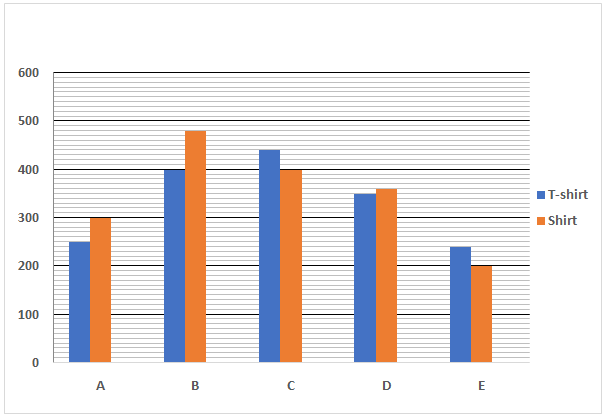
Q. If the number of T-shirts manufactured by company F is 25% more than the number of Shirts manufactured by company A and the number of Shirts manufactured by company F is 30% more than the number of T-shirts manufactured by company E. Find the sum of the number of Shirts and T-shirts manufactured by company F?
Study the following information carefully and answer the questions.
The given bar graph shows the total number of T-shirts and Shirts manufactured by five different companies A, B, C, D and E on Monday.

Q. Total number of T-shirts manufactured by company A and E together is what percentage of the number of T-shirts manufactured by company D?
Read the following information carefully and answer the questions.
The given line graph shows the number of rose plants, lily plants and hibiscus plants in four different nurseries namely P, Q, R and S.
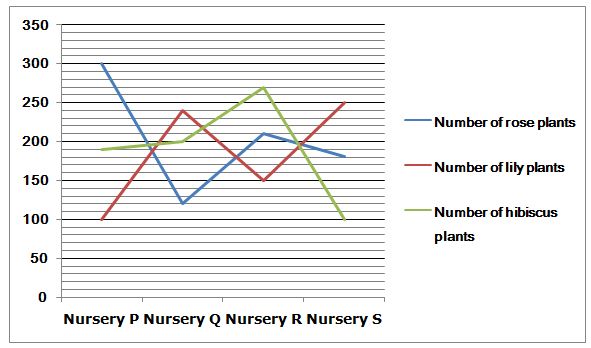
Q. Find the difference between the total number of lily plants in Nursery Q and Nursery R together and the number of hibiscus plants in Nursery S?
Read the following information carefully and answer the questions.
The given line graph shows the number of rose plants, lily plants and hibiscus plants in four different nurseries namely P, Q, R and S.

Q. Ratio of the number of rose plants and lily plants sold to unsold in Nursery R is 2:1 and 3:2. Find the difference between the number of rose plants unsold in Nursery R and the number of lily plants sold in Nursery R?
Read the following information carefully and answer the questions.
The given line graph shows the number of rose plants, lily plants and hibiscus plants in four different nurseries namely P, Q, R and S.

Q. If the number of jasmine plants in Nursery P is 20% more than the number of rose plants in Nursery P, then the number of jasmine plants in Nursery P is what percentage of the number of lily plants in Nursery S?
Study the following information carefully and answer the questions given below.
The given table shows the total number of glasses [sun + power glass] manufactured by five different companies and also given the percentage of number of power glasses is how much more than the percentage of number of sunglasses manufactured by the same company.
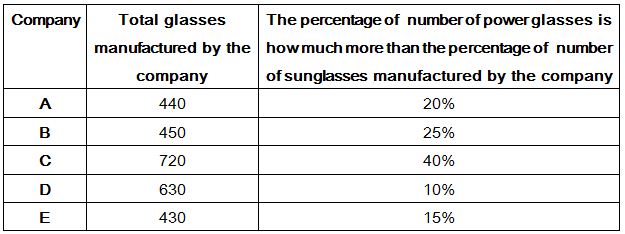
Q. Find the difference between the total number of sun glasses manufactured by company B and D together and the total number of power glasses manufactured by company A and E together?
Study the following information carefully and answer the questions given below.
The given table shows the total number of glasses [sun + power glass] manufactured by five different companies and also given the percentage of number of power glasses is how much more than the percentage of number of sunglasses manufactured by the same company.

Q. Find the ratio between the total number of sunglasses manufactured by all companies together and the total number of power glasses manufactured by all companies together?
Statement : Incessant rain for the past several days has caused the problem of overflowing and flood as the river bed is full of silt and mud. The incessant rain has created a lot of damage and disruption in Andhra Pradesh. At Least six districts in the state have been hit by a severe depression and nearly 450 villages have been affected by the floods and hundreds of kilometers of roads are damaged.
Course of Action :
- The people residing near the rivers should be shifted to the safer place.
- The silt and mud from the river bed should be cleared immediately after the proceeding of water level.
- The affected people should be provided with relief.
Each of the questions below consists of a question and two statements numbered I and II given below it. You have to decide whether the data provided in the statements are sufficient to answer the question:
Q. A family consists of seven persons- P, Q, R, S, T, U and V. Who is the mother-in-law of S?
Statement 1: P is the father-in-law of S who doesn’t have any siblings. V is the Grand-son of U. R is the daughter of Q and she is an unmarried person.
Statement 2: T is the only son of V’s grandmother. T is the son-in-law of S’s father who has only one child
Study the following information carefully and answer the questions given below.
Person Z starts walking from point G towards north and walks 10m to reach point F then he turns right and walks 4m to reach point C where he turns left and walks 3m to reach point A. He then again turns right and walks 7m to reach point B, where he turns right and walks 7m to reach point D. Finally, he turns right and walks 6m to reach point E and stops.
Q. If he again walks 1m towards west from point E to reach point X, then what will be the distance and direction of point X with respect to point A?
Study the following information carefully and answer the questions given below.
Person Z starts walking from point G towards north and walks 10m to reach point F then he turns right and walks 4m to reach point C where he turns left and walks 3m to reach point A. He then again turns right and walks 7m to reach point B, where he turns right and walks 7m to reach point D. Finally, he turns right and walks 6m to reach point E and stops.
Q. Point B is in which direction with respect to point C?
Study the following information carefully and answer the below questions.
The numbers arrangement machine when given an input line of numbers rearranges them following a particular rule in each step. The following is an illustration of input and rearrangement.
Input: 6893 4872 1939 9830 7616 5671
Step I: 9863 8742 9931 9830 7661 7651
Step II: 932 823 916 905 710 711
Step III: 929 834 961 950 701 711
Step IV: 961 950 929 834 711 701
Step V: 04 04 16 09 07 08
Step V is the last step.
Input: 3962 8263 4963 6182 6511 9232
Q. What is the position of “834” in step IV?
Study the following information carefully and answer the below questions.
The numbers arrangement machine when given an input line of numbers rearranges them following a particular rule in each step. The following is an illustration of input and rearrangement.
Input: 6893 4872 1939 9830 7616 5671
Step I: 9863 8742 9931 9830 7661 7651
Step II: 932 823 916 905 710 711
Step III: 929 834 961 950 701 711
Step IV: 961 950 929 834 711 701
Step V: 04 04 16 09 07 08
Step V is the last step.
Input: 3962 8263 4963 6182 6511 9232
Q. What is the sum of all the numbers thus formed in Step V?
If all the digits of the number “646987363945678” are arranged in ascending order from left to right, then what will be the sum of the fifth digit from the left end and sixth digit from the right end after arrangement?


